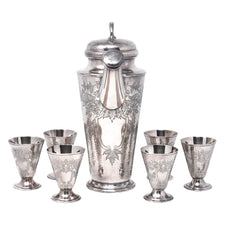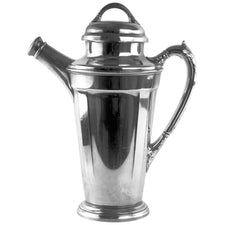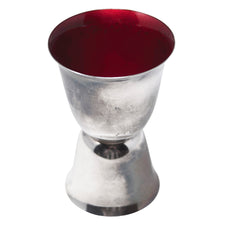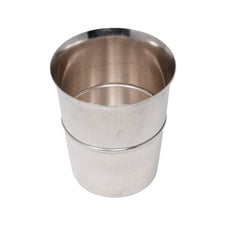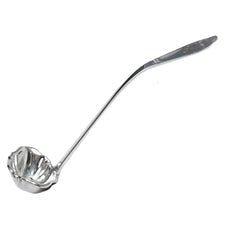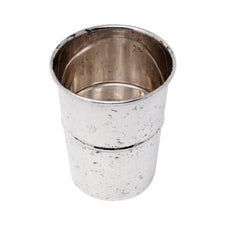Reed & Barton
Reed & Barton’s history can be traced back to the opening of a jewelry shop in 1822 in Taunton Massachusetts. Isaac Babbit, the founder of the jewelry shop, changed his focus in 1824 to producing dishes and other everyday items made from pewter. He later developed a metal alloy called Britannia and, after gaining popularity from his innovations, brought in two designers, Henry G. Reed and Charles E. Barton to produce goods with this new material. The business started declining, so Babbit sold the business to Reed and Barton in 1834. The pair ran Reed & Barton for 30 years until Barton died of a heart attack in 1867, and the company was passed down through the Reed family. As Britannia became less favorable, Reed & Barton shifted to silver production in the mid-1800s. Until silver became widely available in the United States, Reed & Barton would send unplated pieces of holloware and flatware to plating factories. Reed and Barton’s first sterling pattern appeared in 1890. Still in business today, the company continues to produce sterling and silver plated items and have also expanded to other materials including stainless steel, crystal, and wood.
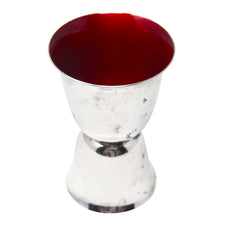
Reed & Barton Red & Green Jigger
$150.00
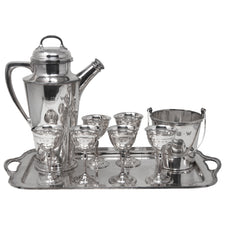
Reed & Barton Silver Plate Cocktail Set
$2,750.00

